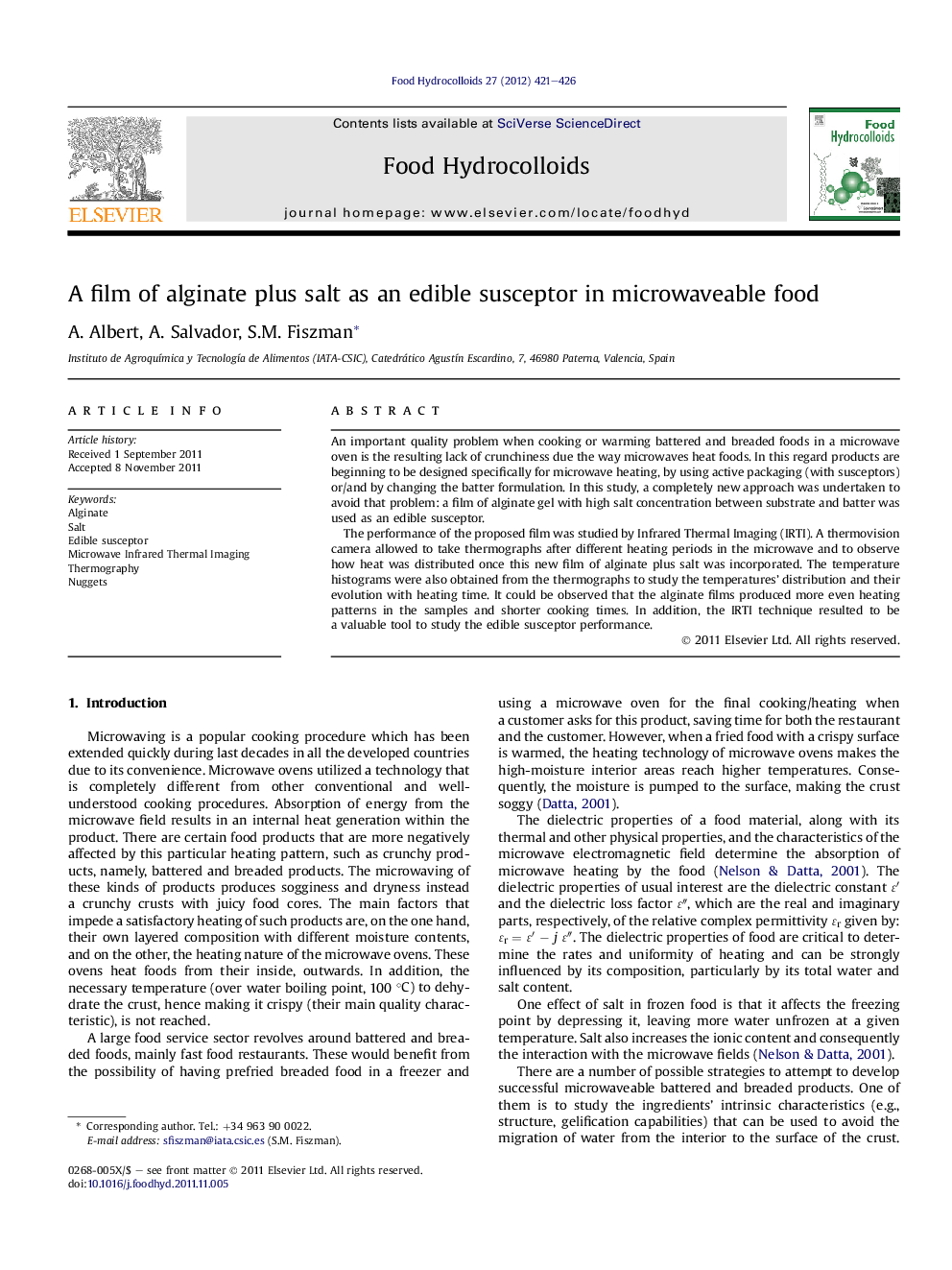| کد مقاله | کد نشریه | سال انتشار | مقاله انگلیسی | نسخه تمام متن |
|---|---|---|---|---|
| 604352 | 880304 | 2012 | 6 صفحه PDF | دانلود رایگان |

An important quality problem when cooking or warming battered and breaded foods in a microwave oven is the resulting lack of crunchiness due the way microwaves heat foods. In this regard products are beginning to be designed specifically for microwave heating, by using active packaging (with susceptors) or/and by changing the batter formulation. In this study, a completely new approach was undertaken to avoid that problem: a film of alginate gel with high salt concentration between substrate and batter was used as an edible susceptor.The performance of the proposed film was studied by Infrared Thermal Imaging (IRTI). A thermovision camera allowed to take thermographs after different heating periods in the microwave and to observe how heat was distributed once this new film of alginate plus salt was incorporated. The temperature histograms were also obtained from the thermographs to study the temperatures’ distribution and their evolution with heating time. It could be observed that the alginate films produced more even heating patterns in the samples and shorter cooking times. In addition, the IRTI technique resulted to be a valuable tool to study the edible susceptor performance.
Figure optionsDownload as PowerPoint slideHighlights
► Batter and breaded products are negatively affected by microwave heating.
► A film of alginate with high salt concentration was used as an edible susceptor.
► Infrared Thermal Imaging (IRTI) was used to study the temperatures’ distributions and their evolution with heating time.
► Alginate films produced more even heating patterns of the samples and shorter cooking times.
Journal: Food Hydrocolloids - Volume 27, Issue 2, June 2012, Pages 421–426